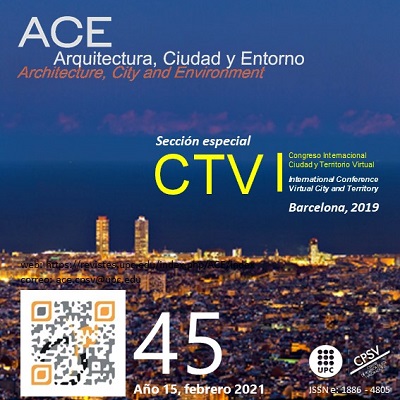Urban-CLIMPLAN. The Urban Heat Island in the Metropolitan Region of Barcelona. Study of the Intensity of the Daytime and Nighttime UHI from Different Sensors
DOI:
https://doi.org/10.5821/ace.15.45.10381Keywords:
nighttime UHI, climate change, combining sensors, Landsat, Sentinel 2, Modis, BarcelonaAbstract
The study of urban heat islands (UHI) is of great importance in the context of climate change (CC). The use of satellite images has helped considerably to understand UHI, especially in analyses of land surface temperature (LST). However, available sensors have a major limitation: their low spatial resolution (100 meters, Landsat; 1000 meters, MODIS) does not allow detailed analysis of UHI. Moreover, most remote sensors are limited to daytime data collection, while UHI mainly appear during the night. The images provided by satellites that study nocturnal thermal radiation, such as MODIS, have very low spatial resolution. There is abundant literature about the fusion of images from several satellites and sensors, especially information from MODIS and Landsat. However, most of these studies have concentrated on studying the combination of congruent images in the temporal plane, to extrapolate the results obtained to other temporal instances for which there is no detailed information. In general, few studies have focused on increasing the resolution of thermal images beyond the 100 meters/pixel of Landsat. The objective of this paper is to combine information from various sensors (Modis, Landsat 8 and Sentinel 2) by constructing a set of OLS models of daytime and nighttime LST. These models provide a detailed view of daytime UHI (10 meters) and a robust evaluation of the range of cooling produced during the night. A modelling exercise at 1 meter/pixel of resolution has also been developed, using information from more detailed sensors installed on aircraft in the Barcelona Metropolitan Area.
Downloads
Published
Issue
Section
License
| INTELECTUAL PROTECTION CRITERIA |
At this moment, it is count with the "Oficina Española de Patentes y Marcas", while global protection it is being processed by the World Intelectual Property Organization (OMPI/WIPO). Nevertheless the International Standard Serial Number Office (ISSN) has given the following numbers ISSN: 1886-4805 (electronic version) and 1887-7052 (paper version). All articles will be peer reviewed, using double blind reviewing. |
| COPYRIGHT |
The article contents and their comments are authors exclusive liability, and do not reflect necessarily the journal editor commitee's opinion. All ACE published works are subject to the following licence CC BY-NC-ND 3.0 ES http://creativecommons.org/licenses/by-nc-nd/3.0/es/ It implies that authors do not hold nor retain the copyright without restrictions but only those included in the licence. |


































